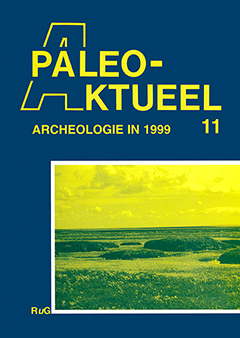ARCHEOLOGISCH ONDERZOEK ROND DE BELLSUND, SPITSBERGEN
Samenvatting
In several places along the Bellsund, in the southem part of Spitsbergen, remains of 17th-century whaling stations have been found. In 1998 and 1999 a team of the Arctic Centre/GIA carried out an extensive study of the 17th-century whaling stations in the area around the Bellsund in Spitsbergen. Two stations in the Recherche Fjord and three stations at Midterhuken were surveyed and mapped in detail. The stations were built and used by English whalers mostly from 1613 until 1640. At the beginning, Dutch whalers also were active in the Bellsund region. They built some ovens and houses there which afterwards were pulled down and rebuilt elsewhere by the English. Dutch roof tiles and yellow bricks still mark the site and indicate the Dutch presence here. In 1630-1631 eight English whalers left behind at Spitsbergen successfully wintered at Lægerneset. The place probably was abandoned by the English arround 1640. The station consists of three ovens for boiling whale blubber into oil, a work platform for chopping the blubber and seven houses. Behind the station a graveyard with seventeen graves was found. The samples from the excavations consisted of nails, fragments of clay pipes and pottery, pieces of leather and textile and many bones. Most of the bones turned out to be bones of the Brunnich's guillemot instead of Little auk as one might expect, given their great numbers today. The other stations at Midterhuken probably were English too. However, even less historical evidence is available about these stations. Although a Zeeland coin was found, it is not very likely that Dutch whalers visited this station. The large station consisted of four ovens and three or four houses. Five work platforms indicate that this probably was a production station only. The excavation of the middens showed the same picture as the excavations at Lægerneset. Even the composition of the bird bones was more or less the same. Here also Brunnich's guilemot was the most frequent bird, with the fulmar in second place. The excavation of one of the work platforms indicated that these platforms were indeed manmade. The whalers used these places for cutting the blubber.

